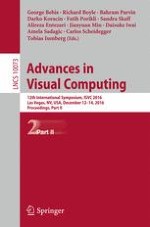2016 | OriginalPaper | Buchkapitel
A Portable and Unified CPU/GPU Parallel Implementation of Surface Normal Generation Algorithm from 3D Terrain Data
verfasst von : Brandon Wilson, Robert Deen, Alireza Tavakkoli
Erschienen in: Advances in Visual Computing
Aktivieren Sie unsere intelligente Suche, um passende Fachinhalte oder Patente zu finden.
Wählen Sie Textabschnitte aus um mit Künstlicher Intelligenz passenden Patente zu finden. powered by
Markieren Sie Textabschnitte, um KI-gestützt weitere passende Inhalte zu finden. powered by
